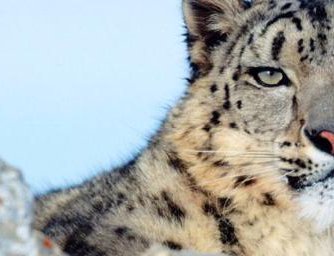
Indira Basu
The snow leopard, an endangered species, is a big cat found in the mountains of Central Asia and South Asia. Ahead of an international conference on the snow leopard, several conservation organisations, including the Snow Leopard Trust and the World Wildlife Fund (WWF), have launched a joint online campaign to save the big cat.
The conference titled ‘International Snow Leopard and Ecosystem Forum’, will take place in the Central Asian country Kyrgyzstan’s capital Bishkek on 24-25 August, and will see in attendance, representatives from 12 countries including India, Pakistan, China, Nepal, Bhutan and Mongolia. Speaking to The Quint, Rishi Kumar Sharma, Snow Leopard Coordinator, WWF-India said:
I will be among those attending next month’s conference in Bishkek. There will also be a representative from the Ministry of Environment, Forest and Climate Change accompanying the Indian team.
Approximate 450-500 Number of Snow Leopards are in India
Wildlife conservationists across the world launched the SaveSnowLeopards online petition a week ago, urging leaders from the 12 countries, which fall under the snow leopard’s habitat range, to take immediate action to save the cat.
Among their demands is a strategy to tackle poaching and illegal trade of snow leopards and ensuring that development projects, especially in rural areas, are sustainable, while not encroaching upon wildlife habitat.
4000 Approximate Number of Snow Leopards Left in the world.
Conflict with local herder communities might be the most pressing threat snow leopards face today. Many of these people live below poverty lines, and can ill afford to lose livestock to attacks from predators. In desperation, they sometimes retaliate against snow leopards. To break this vicious circle, we need to support these communities and help them coexist with the cat.
According to TRAFFIC’s (a conservation programme) Senior Programme Director for Asia, James Compton: , 220 – 450 Number of Snow Leopards Killed Each Year.
TRAFFIC’s analysis found that a minimum of four snow leopards were poached every week since 2008; we strongly encourage all 12 range States to combat these unacceptably high levels of poaching and are ready to support these efforts by providing information to help target interventions to stop snow leopard poaching and trafficking.
China, India, Mongolia, Pakistan, Tajikistan Countries Where 90 % of Snow Leopard Poaching Takes Place.
Compton also feels that even if poaching were to be kept in check, the snow leopard would still face grave threats, such as the loss of its habitat.
Jammu and Kashmir, Himachal Pradesh, Uttarakhand, Sikkim, Arunachal Pradesh Habitat Range in India for the Snow Leopard
Talking about the threat of development projects to the snow leopard, Rishi Kumar Sharma says: Most snow leopard range states are developing countries or emerging economies. Many of them are planning or undertaking large-scale infrastructure or mining projects to boost growth.
Sharma adds, “such projects can be extremely disruptive to the fragile ecosystems that snow leopard’s call home. It’s critical for the snow leopard that they be well-planned to avoid damage.”
On 23 October every year, International Snow Leopard Day is observed.
(With inputs from The Guardian , WWF)
Courtesy: The Quint
- TANAHU HYDROPOWER PROEJCT: A Significant Achievement
- Apr 15, 2024
- AMBASSADOR HANAN GODAR: Sharing Pain With A Nepali Family
- Mar 30, 2024
- VISIT OF KfW AND EIB TO NEPAL : Mission Matters
- Mar 25, 2024
- NEPAL BRITAIN SOCIETY: Pratima Pande's Leadership
- Mar 24, 2024
- NEPAL ARMY DAY: Time To Recall Glory
- Mar 15, 2024















